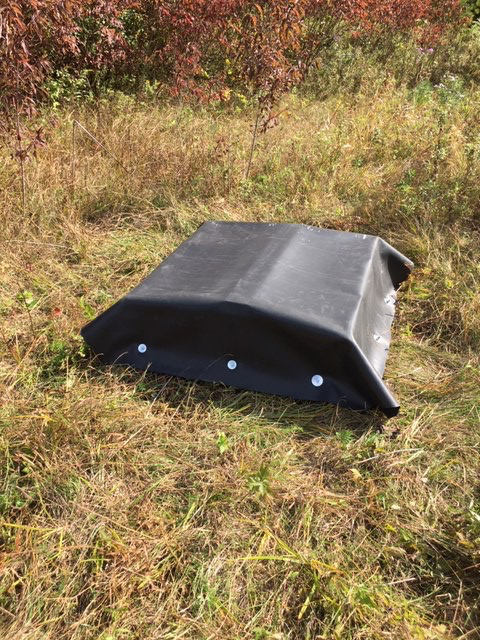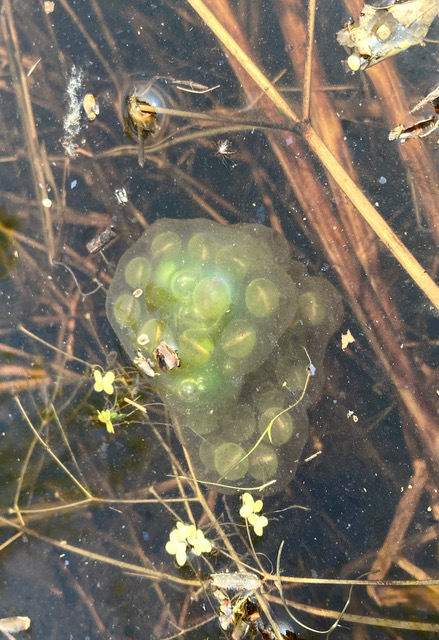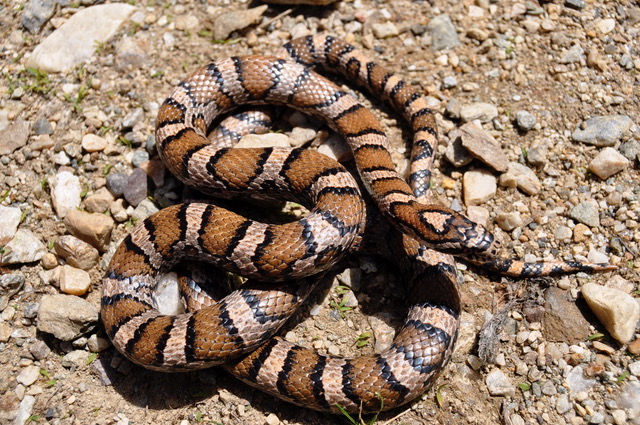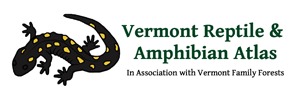
Herp Update: Education through Press, Current Activity, Snake Hotels — May 10, 2023
Herp Education through the Press
Herpers, thanks for all the questions you e-mailed and called in for our segment on the Vermont Edition program of Vermont Public. The producer and host were impressed with all the interest and we accomplished our dual goals of getting some good herp educational information out to the public and making a good impression on the producer and host of Vermont Edition. They asked if we would be willing to return annually, which is just what we were hoping for.
In addition, WCAX Channel 3 had us on for a segment on Common Gartersnakes and the Burlington Free Press gave us front page coverage on amphibians (paywalled) during the same week. A good part of the current press interest is driven by the fact that they want to cover something spring- related, but they also want to cover a subject that the public is interested in. So, thanks again to everyone who called and sent in questions to Vermont Edition. And, my apologies to the many whose questions did not get answered because I was so long-winded.
Current Herp Activity
As a result of the sunny and seasonable weather we have had the last few days, we have begun to try to fill in some local gaps in our turtle distribution maps. Yesterday, Kate and I visited Goshen in an attempt to find and photograph a basking Painted Turtle. We have been seeing many Painted Turtles basking at a variety of locations statewide. After spending some time on Google Earth, we visited what appeared to be the best reasonably-accessible Painted Turtle habitat. However, we failed to find any turtles.
As you go up in elevation and out to more remote and isolated ponds, the chances of finding any turtles drops. We have visited the town of Somerset in south central Vermont a few times and even used live traps to see if we could find any turtles, but we have not. Nor has anyone ever reported a turtle of any kind from Somerset. So far, Somerset appears turtle-free.
We know Goshen has at least a few turtles of two species (Painted and Snapping Turtles) since we have one historic photo and a couple of sight records. While up there, we recruited the help of a woman living on one of the best-looking pieces of habitat in Goshen, and hopefully she can find and photograph some Goshen turtles for us. If you spend any time in Goshen, please do keep your eyes open and camera ready for any turtles. As is almost always the case on these excursions, while in Goshen, we did pick up useful records of a couple other species. Kate found and photographed a Spotted Salamander egg mass, and I managed to locate a single Pickerel Frog that we photographed.
We also made two visits to the very limited remaining natural habitat within the city of Vergennes. Once again using Google Earth, we located what looked like the best breeding habitat for our target species: the Spotted Salamander and Eastern Newt. No one has ever reported either species from within the city limits of Vergennes.
In the first wetland we visited, Kate found a few Blue-spotted Salamander eggs. Blue-spotted Salamanders seem to be somewhat tolerant of habitat fragmentation, and we have found them within the borders (but along the edge) of Vergennes before, so this was not a complete surprise. Still, there were very few eggs. We also found a few tiny Wood Frog tadpoles, but no Spotted Salamanders or Eastern Newts.

Spotted Salamander egg mass
This morning I again visited Vergennes to search what appeared on Google Earth to be a farm pond. It turned out to be a large vernal pool instead. This pool was filled with many Wood Frog tadpoles. Some were quite large, indicating that the eggs must have been laid very early this spring. I also managed to find seven, partially developed, Spotted Salamander egg masses (see photo). However, despite searching and repeated netting, I could not find any Eastern Newts.
Looking for the egg masses of Spotted Salamanders in ponds and vernal pools is one of the easiest and most convenient ways of locating them. So, we have now added Spotted Salamander to the list of herptiles known to live in Vergennes. Still, the total number of Spotted Salamanders in Vergennes might only be a handful, reflecting the very limited remaining habitat available to them.
While in Vergennes, I also heard some Gray Treefrogs calling from the trees surrounding the pool. Gray Treefrogs and American Toads will be the next two amphibian species to migrate, call, and lay eggs as the temperatures continue to warm.
Please do use the searchable table at the link below to find the town/species combinations where we still need photo-documentation of our common herptile species. We rely on your help!
https://www.vtherpatlas.org/priorities-data-gaps/common-vermont-species-that-need-documentation/
Snake Hotels
While in the Bristol area this morning, I could not resist checking one of our snake hotels (see attached photo). These are essentially miniature lumber piles covered with rubber pond liner to create warm hiding spots for snakes. I was really pleased to find two adult Eastern Milksnakes (see photo) and two Common Gartersnakes using our hotel. These inventions of ours have proven to be very popular with snakes and an excellent inventory and teaching tool. If Eastern Milksnakes are now active, that means all of Vermont’s snakes are now up and about.

Snake Hotel

Eastern Milksnake

